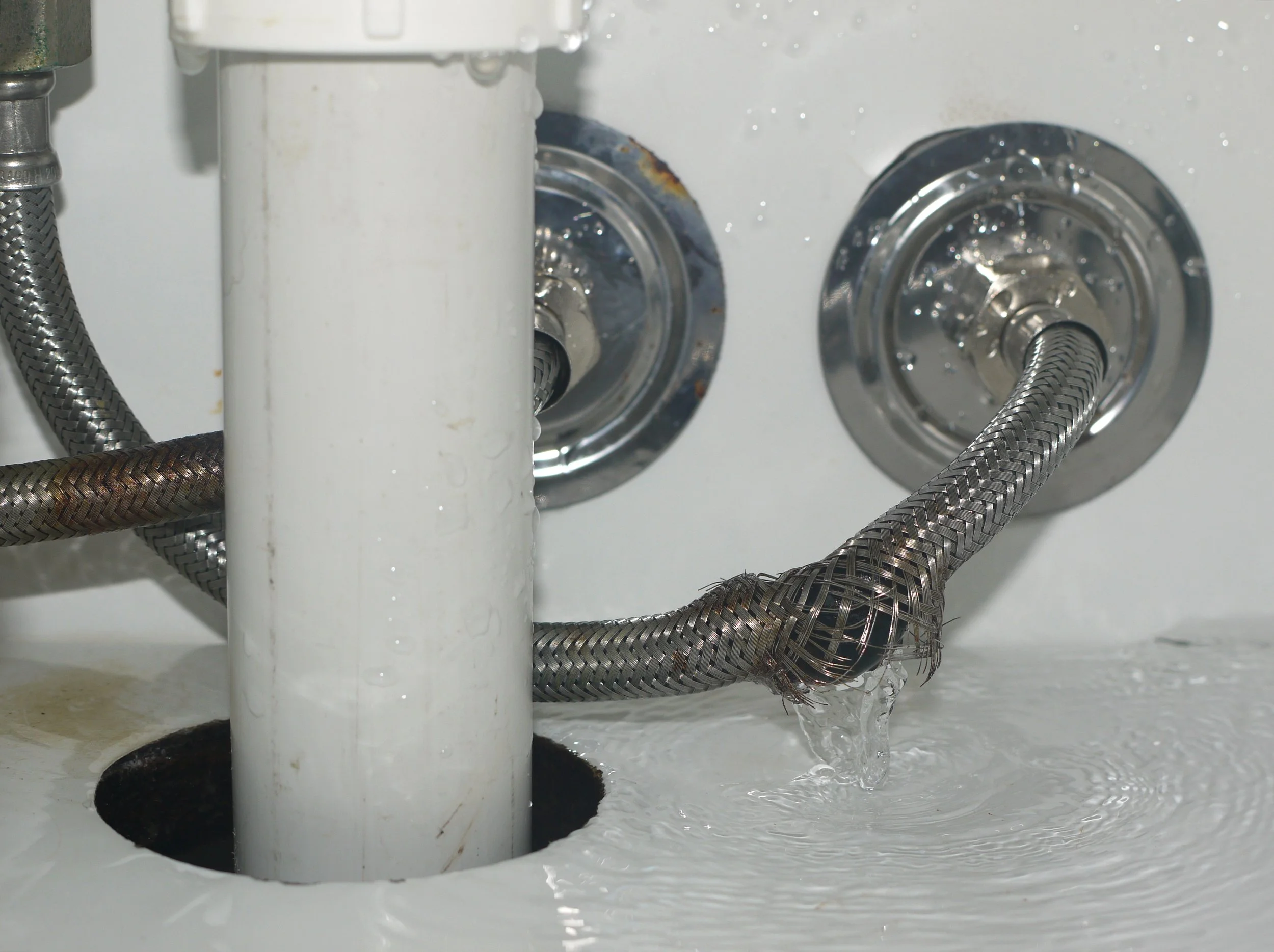How Proactive Maintenance Can Prevent Expensive Water Damage in Strata Buildings
When it comes to strata related insurance claims, one issue stands out above the rest, water damage. In fact, according to strata insurer CHU, water damage accounts for just over 50% of the residential strata claims they receive.
The Hidden Risk of Flexi-Hoses
One of the major culprits are flexible hoses or “flexi-hoses” that connect plumbing fixtures such as sinks and appliances. These are bendable pipes that are typically made up of a stainless-steel braid on the outside, with a rubber or plastic inner tube, making plumbing easier in tight spaces.
Many apartment owners don’t realise that these hidden hoses have a limited lifespan and wear out over time. They need to be checked regularly by a plumber to avoid a potential disaster.
Why are Water Damage claims so common in strata?
Hidden plumbing: Strata buildings often have a more complex plumbing system than a typical house. Pipes can be hidden inside walls, across multiple units, floors and ceilings. This can make it easy for a small leak to go unnoticed for a long time.
Locating the source: A leak in one apartment isn’t just contained to that unit. It can quickly spread to other floors and common areas, causing a lot of damage and making it difficult to find the original source.
Responsibility for Maintenance: Responsibility for maintenance can sometimes be unclear in strata properties, which means issues may go unchecked. The Owners Corporation is responsible for maintenance and repair of common property, with the owners responsible for repairing anything in within their own unit. Without a clear understanding and a plan in place, maintenance tasks can fall through the cracks, leading to preventable damage and costly water damage claims.
What preventative measures can help avoid water damage claims?
The key to protecting both the common property and individual owners property is to be proactive.
Here are six simple steps you can take:
Inspect and Replace Flexi-hoses: regularly check these hoses, which are found under sinks and amongst plumbed in appliances, for any signs of wear or rust. Don’t wait for them to burst, they should be inspected and replaced as a preventative measure.
Check for leaks: Promptly replace leaky or broken taps and shower heads. Regularly maintain toilets and communal washing machines. Also, keep an eye out for any water stains or bubbling on walls and ceilings, these can be signs of a hidden leak.
Maintain Roofs and Gutters: Make sure your building’s roof and gutters are clean and in good condition to prevent water from seeping into the building during storms.
Investing in Maintenance: Having a solid plan in place helps maintain both the units and common areas, keeping things running well and protecting everyone's investment.
Turn Off the Water: If you're going away for a long period, turn off the water supply to your unit. This can save you from a major headache if a pipe or hose bursts while you're gone.
Educating Residents: Make sure everyone in the building knows when the Owners Corporation/Body Corporate is responsible and when it is the unit owner’s responsibility to maintain certain property.
By taking these steps, everyone can help protect the property and avoid the financial stress of a major water damage claim.
Since 1999, CRM Brokers has helped businesses navigate risk with smart, tailored insurance solutions. From local companies to international programs, we combine global reach with a personal touch, finding the right coverage for every unique organisation—no matter how complex the challenge.
www.crmbrokers.com.au | 1300 880 494
Disclaimer:
Terms, conditions, limits, deductibles and exclusions apply any products referred to above. Any advice in this article is general advice only and has been prepared without taking into account your objectives, financial situation or needs. Before making a decision to acquire any product(s) or to continue to hold any product, we recommend that you consider whether it is appropriate for your circumstances and read the relevant Product Disclosure Statement (‘PDS’), Financial Services Guide (‘FSG’) and the Target Market Determination (‘TMD’) which can be obtained by contacting CRM Brokers. Information is current as at the date the article is written as specified within it but is subject to change. CRM Brokers make no representation as to the accuracy or completeness of the information. Various third parties have contributed to the production of this content.


